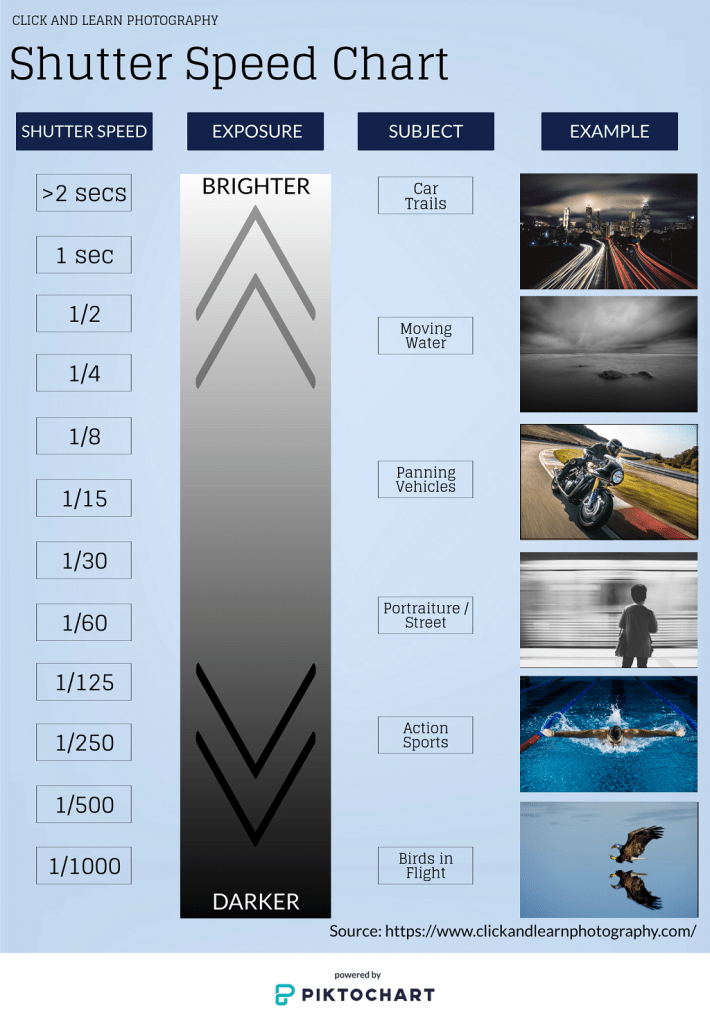Photography Tips:
The 3 pillars of exposure are:
- Shutter Speed
- Aperture Size
- ISO
Shutter Speed:
Slow shutter speed allows more light in, resulting in a brighter picture (which makes a slow shutter speed great for nighttime or low light conditions) but the down side is what is known as a motion blur.
A motion blur isn’t necessarily a bad thing, you just need to know how to use it to your advantage. To avoid shaking (which causes extra blur), you can use a tripod, which will allow you to take sharper pictures of static objects.
Visual explantion from clickandlearnphotography:
 __
__
__
__
Aperture Size:
Aperture is the hole in the lens through which lights enters. Naturally, the bigger the hole, the more light that enters. The size number is sometimes reffered to as “f stop”.
The “catch” is that the number seen on the cameras (the “f stop”) is multiplicatively inverse to it’s size. In simpler terms: ‘16’ (for example) will result in a much smaller hole than ‘2’. Hence, the numbers are usually denoted like this:
- f/1.4
- f/2
- …
- f/16
- f/22
The forward slash indicates the multiplicative inversion. Even if it doesn’t appear, the rule of inversion still applies
Aside from “how much light gets in”, the aperture size affects the outcome in many other ways that ought to be considered.
For example, the depth of field - meaning how much of the image is in focus (notice that sharpness due to focus is different from motion blur).
Visual explantion from clipchamp:

ISO:
This parameter controls your camera’s sensor sensitivity to light. Simply put, the higher the number, the higher the sensitivity, hence the brighter the outcome.
When setting your camera for your desired image, this is usually the last parameter you’ll “fiddle” with since it only controls the brightness of the image. It will slightly change how colors are perceived by the camera but that’s not all.
The problem with high ISO is “digital noise”. If your aperture is too small and shutter speed is too fast and you’ll try to compensate simply by raising your ISO, you might damage the color quality of your image (see image demo below). The amount of digital noise varies between cameras. Better cameras with better sensors can use a higher ISO without notably “damaging” the image.
Visual explantion from mel365:

This is only the smallest chunk of the tip of the iceberg. If you want to know more, google and explore blogs and websites.
Hope you enjoyed.
Tomer
